Themed collection Celebrating 50 years of Dalton Transactions: Our Top 50

Relaxation dynamics of dysprosium(III) single molecule magnets
This perspective paper describes illustrative examples of pure dysprosium(III)-based single molecule magnets, published during the past three years, showing new and fascinating phenomena in terms of magnetic relaxation.
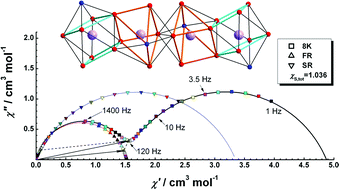
Dalton Trans., 2011,40, 9953-9963
https://doi.org/10.1039/C1DT10474H
The mechanism of the modified Ullmann reaction
In this perspective, we review the mechanistic studies reported for the Ullmann condensation reaction since its discovery and we present an overview of the possible and proposed mechanistic pathways for copper-catalyzed aromatic nucleophilic substitution reactions in homogeneous systems.
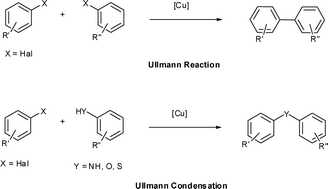
Dalton Trans., 2010,39, 10338-10351
https://doi.org/10.1039/C0DT00674B
The status of platinum anticancer drugs in the clinic and in clinical trials
In this perspective article we update the status of platinum anticancer drugs.
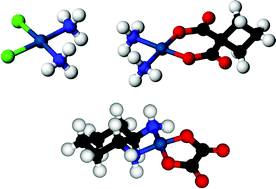
Dalton Trans., 2010,39, 8113-8127
https://doi.org/10.1039/C0DT00292E
Frustrated Lewis pairs: a new strategy to small molecule activation and hydrogenation catalysis
Frustrated Lewis pairs, derived from combinations of sterically demanding Lewis acids and bases provide a unique route to the activation of small molecules and applications in catalysis.
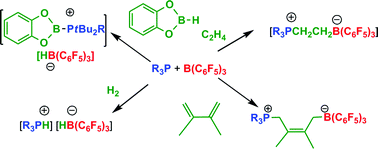
Dalton Trans., 2009, 3129-3136
https://doi.org/10.1039/B819621D
Utilisation of CO2 as a chemical feedstock: opportunities and challenges
Enzymes make dreams… a reality.

Dalton Trans., 2007, 2975-2992
https://doi.org/10.1039/B700658F
Ammonia–borane: the hydrogen source par excellence?
Ammonia–borane, H3NBH3, with its high hydrogen content and suitable chemical properties (protic N–H, hydridic B–H), is a promising H2 storage material. Its preparation, electronic structure and H2-release reactions are highlighted.
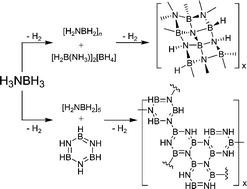
Dalton Trans., 2007, 2613-2626
https://doi.org/10.1039/B703053C
Engineering coordination polymers towards applications
The development in the field of coordination polymers or metal-organic coordination networks is assessed in terms of property investigations upon which potential applications could be based, such as catalysis, chirality, conductivity, luminescence, magnetism, spin-crossover, non-linear optics and porosity or zeolitic behavior.
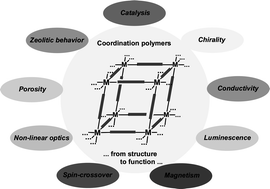
Dalton Trans., 2003, 2781-2804
https://doi.org/10.1039/B305705B
Alkane C–H activation and functionalization with homogeneous transition metal catalysts: a century of progress—a new millennium in prospect
The main advances in the title area are reviewed with emphasis on catalytic alkane functionalization, both organometallic and bioinorganic. Current challenges are discussed.
The cover artwork shows the main alkane functionalization reactions that have been achieved so far. The background shows William Crabtree from Ford Madox Brown's mural “Crabtree watching the Transit of Venus, 1639” located in Manchester Town Hall; the next transit visible from the UK is June 8, 2004.

J. Chem. Soc., Dalton Trans., 2001, 2437-2450
https://doi.org/10.1039/B103147N
Large-scale delamination of multi-layers transition metal carbides and carbonitrides “MXenes”
Large-scale delamination of MXenes was achieved by using a simple aqueous organic base treatment followed by agitation in water.
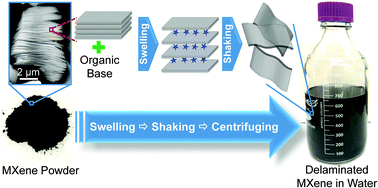
Dalton Trans., 2015,44, 9353-9358
https://doi.org/10.1039/C5DT01247C
Aqueous room temperature synthesis of cobalt and zinc sodalite zeolitic imidizolate frameworks
Sodalite structures ZIF-67 (Co(Me-Im)2) and ZIF-8 (Zn(Me-Im)2) were formed at room temperature in water in 10 min. In these syntheses triethylamine deprotonates the 2-methylimidazole ligands and nucleates the frameworks.

Dalton Trans., 2012,41, 5458-5460
https://doi.org/10.1039/C2DT30174A
Sandwich-like NiCo layered double hydroxide/reduced graphene oxide nanocomposite cathodes for high energy density asymmetric supercapacitors
Lab-synthesized sandwich-like LDH/rGO composites were assembled into asymmetric supercapacitors exhibiting high energy density and excellent cycling stability.

Dalton Trans., 2019,48, 5193-5202
https://doi.org/10.1039/C9DT00615J
A flexible Eu(III)-based metal–organic framework: turn-off luminescent sensor for the detection of Fe(III) and picric acid
A rod-packing MOF (1) with strong red-light-emission can reversibly shrink/swell to transform to narrow-pore 1a/large-pore 1b. 1b is a turn-off luminescent sensor for the selective detection of Fe3+ ions and PA with detection limits of around 10−7 M for both of them.
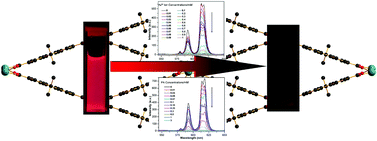
Dalton Trans., 2013,42, 12403-12409
https://doi.org/10.1039/C3DT51081F
Adsorption of divalent metal ions from aqueous solutions using graphene oxide
The adsorptive properties of graphene oxide towards divalent metal ions (copper, zinc, cadmium and lead) have been investigated.
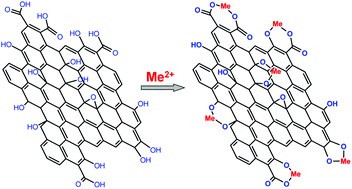
Dalton Trans., 2013,42, 5682-5689
https://doi.org/10.1039/C3DT33097D
Large scale electrochemical synthesis of high quality carbon nanodots and their photocatalytic property
Carbon nanodots with high purity were synthesized through a one-step electrochemical approach with pure water used as the electrolyte.
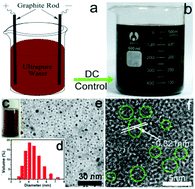
Dalton Trans., 2012,41, 9526-9531
https://doi.org/10.1039/C2DT30985H
The accuracy of DFT-optimized geometries of functional transition metal compounds: a validation study of catalysts for olefin metathesis and other reactions in the homogeneous phase
DFT-based geometry optimization of transition metal catalysts: the benefit of dispersion and the inferiority of B3LYP.
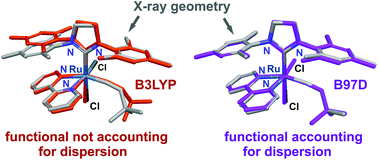
Dalton Trans., 2012,41, 5526-5541
https://doi.org/10.1039/C2DT12232D
The P2-Na2/3Co2/3Mn1/3O2 phase: structure, physical properties and electrochemical behavior as positive electrode in sodium battery
Manganese substituted sodium cobaltate, Na2/3Co2/3Mn1/3O2, with a layered hexagonal structure (P2-type) was obtained by a co-precipitation method followed by a heat treatment at 950 °C.
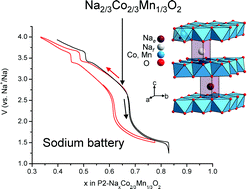
Dalton Trans., 2011,40, 9306-9312
https://doi.org/10.1039/C1DT10798D
New photocatalyst BiOCl/BiOI composites with highly enhanced visible light photocatalytic performances
BiOCl/BiOI composites with different amounts of BiOCl show the highest efficiency on the degradation of Methyl Orange (MO) and Rhodamine (RhB), respectively.
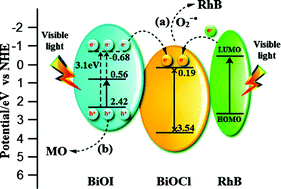
Dalton Trans., 2011,40, 6751-6758
https://doi.org/10.1039/C1DT10471C
Organic–inorganic composite photocatalyst of g-C3N4 and TaON with improved visible light photocatalytic activities
Organic–inorganic composite photocatalyst g-C3N4–TaON with visible-light response was prepared by a milling-heat treatment method. The obviously increased performance of g-C3N4–TaON relative to either single-phase g-C3N4 or TaON is ascribed mainly to enhancement of electron–hole separations.
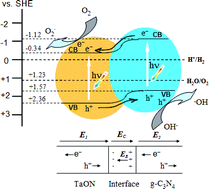
Dalton Trans., 2010,39, 1488-1491
https://doi.org/10.1039/B914110C
Covalent radii revisited
A revised list of covalent atomic radii is proposed, based on crystallographic data, and the periodic trends are discussed.
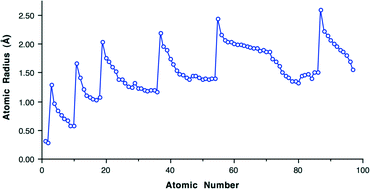
Dalton Trans., 2008, 2832-2838
https://doi.org/10.1039/B801115J
Structural variation in copper(I) complexes with pyridylmethylamide ligands : structural analysis with a new four-coordinate geometry index, τ4
Four new copper(I) complexes of pyridylmethylamide ligands were synthesized and characterized. The geometries of the four-coordinate copper centers were analyzed with the new geometry index, τ4.
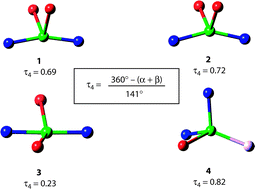
Dalton Trans., 2007, 955-964
https://doi.org/10.1039/B617136B
Cationic, linear Au(I) N-heterocyclic carbene complexes: synthesis, structure and anti-mitochondrial activity
A family of six gold(I) complexes of N-heterocyclic carbene ligands has been synthesized and structurally characterized and the relationship between the lipophilicities and anti-mitochondrial activities of the complexes evaluated.

Dalton Trans., 2006, 3708-3715
https://doi.org/10.1039/B602560A
Redox behavior of tumor-inhibiting ruthenium(III) complexes and effects of physiological reductants on their binding to GMP
The redox properties and GMP-binding of antitumor Ru(III) complexes were studied by capillary electrophoresis, NMR spectroscopy and square wave voltammetry with regard to the activation of such compounds in tumor tissue.
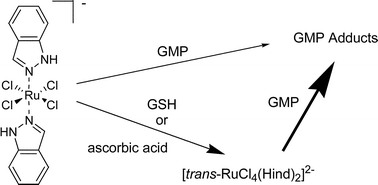
Dalton Trans., 2006, 1796-1802
https://doi.org/10.1039/B511792E
Magnesium and zinc complexes of a potentially tridentate β-diketiminate ligand
The synthesis of the unsymmetrically substituted β-diketimine, 2-(2-methoxyphenylimino)-4-(2,6-diisopropylphenylamido)pent-2-ene, (BDI-2)H, is described and its complexation chemistry with magnesium and zinc is explored.
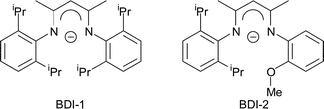
Dalton Trans., 2004, 570-578
https://doi.org/10.1039/B314760F
Electrocatalysis of hydrogen production by active site analogues of the iron hydrogenase enzyme: structure/function relationships
A series of binuclear FeIFeI complexes that serve as structural models for the active site of Fe-hydrogenase are shown to be electrocatalysts for H2 production in the presence of acetic acid in acetonitrile.
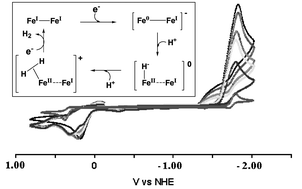
Dalton Trans., 2003, 4158-4163
https://doi.org/10.1039/B304283A
Study on composition, structure and formation process of nanotube Na2Ti2O4(OH)2
Polycrystalline TiO2 reacts with concentrated NaOH solution for 20 h at 110 °C to form a nanotube material, i.e. nanotube Na2Ti2O4(OH)2 rather than TiO2, TiOx or H2TiO3: 2TiO2 + 2NaOH →Na2Ti2O4(OH)2.
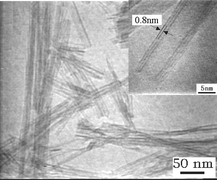
Dalton Trans., 2003, 3898-3901
https://doi.org/10.1039/B305585J
The Mayer bond order as a tool in inorganic chemistry
The utility of the Mayer bond order as a bonding tool is investigated and the decomposition into the contributions from the symmetry types is presented by case studies drawn from the breadth of the periodic table.
![Graphical abstract: The Mayer bond order as a tool in inorganic chemistry [ ]](/en/Image/Get?imageInfo.ImageType=GA&imageInfo.ImageIdentifier.ManuscriptID=B102094N&imageInfo.ImageIdentifier.Year=2001)
J. Chem. Soc., Dalton Trans., 2001, 2095-2108
https://doi.org/10.1039/B102094N
Hydrothermal synthesis and crystal structures of three-dimensional co-ordination frameworks constructed with mixed terephthalate (tp) and 4,4′-bipyridine (4,4′-bipy) ligands : [M(tp)(4,4′-bipy)] (M = CoII, CdII or ZnII)
J. Chem. Soc., Dalton Trans., 2000, 3669-3674
https://doi.org/10.1039/B005438K
A critical account on π–π stacking in metal complexes with aromatic nitrogen-containing ligands
J. Chem. Soc., Dalton Trans., 2000, 3885-3896
https://doi.org/10.1039/B003010O
Solvent extraction of strontium nitrate by a crown ether using room-temperature ionic liquids †
†
The phase behaviour of 1-alkyl-3-methylimidazolium tetrafluoroborates; ionic liquids and ionic liquid crystals
The bite angle makes the difference: a practical ligand parameter for diphosphine ligands
The rational design of high symmetry coordination clusters †
†
Cationic Group 4 metallocene complexes and their role in polymerisation catalysis: the chemistry of well defined Ziegler catalysts
Synthesis and study of a mixed-ligand ruthenium(II) complex in its ground and excited states: bis(2,2′-bipyridine)(dipyrido[3,2-a : 2′,3′-c]phenazine-N4N5)ruthenium(II)
Supplement. Tables of bond lengths determined by X-ray and neutron diffraction. Part 2. Organometallic compounds and co-ordination complexes of the d- and f-block metals
Kinetics and mechanism of ortho-palladation of ring-substituted NN-dimethylbenzylamines
SUPERQUAD: an improved general program for computation of formation constants from potentiometric data
Synthesis and properties of the divalent 1,2-bis(dimethylphosphino)ethane (dmpe) complexes MCl2(dmpe)2 and MMe2(dmpe)2(M = Ti, V, Cr, Mn, or Fe). X-Ray crystal structures of MCl2(dmpe)2(M = Ti, V, or Cr), MnBr2(dmpe)2, TiMe1.3Cl0.7(dmpe)2, and CrMe2(dmpe)2
Synthesis, structure, and spectroscopic properties of copper(II) compounds containing nitrogen–sulphur donor ligands; the crystal and molecular structure of aqua[1,7-bis(N-methylbenzimidazol-2′-yl)-2,6-dithiaheptane]copper(II) perchlorate
Exchange interaction in tetrameric oxygen-bridged copper(II) clusters of the cubane type
Spectroscopic and redox studies of some copper(II) complexes with biomimetic donor atoms: implications for protein copper centres
Transition metal–carbon bonds. Part XLII. Complexes of nickel, palladium, platinum, rhodium and iridium with the tridentate ligand 2,6-bis[(di-t-butylphosphino)methyl]phenyl
Subvalent Group 4B metal alkyls and amides. Part I. The synthesis and physical properties of kinetically stable bis[bis(trimethysilyl)methyl]-germanium(II), -tin(II), and -lead(II)
Satellite structure in the X-ray photoelectron spectra of some binary and mixed oxides of lanthanum and cerium
Arene ruthenium(II) complexes formed by dehydrogenation of cyclohexadienes with ruthenium(III) trichloride
Alkyl, alkynyl, and olefin complexes of bis(π-cyclopentadienyl)-molybdenum or -tungsten : a reversible metal-to-ring transfer of an ethyl group
Mechanism of reductive elimination of ethane from some halogenotrimethylbis(tertiary phosphine)platinum(IV) complexes
Dichlorotetrakis(dimethyl sulphoxide)ruthenium(II) and its use as a source material for some new ruthenium(II) complexes
Low co-ordination numbers in lanthanide and actinide compounds. Part I. The preparation and characterization of tris{bis(trimethylsilyl)-amido}lanthanides
Carboxylato-triphenylphosphine complexes of ruthenium, cationic triphenylphosphine complexes derived from them, and their behaviour as homogeneous hydrogenation catalysts for alkenes
About this collection
To celebrate 50 years of Dalton Transactions in 2021, we have selected 50 of our most highly cited articles published over the last 50 years in this special web collection. Our top 50 list covers seminal work in the field of inorganic chemistry and represents research that has been well-received by the community over the last 50 years.
Find out more about our top 50 articles on our blog.